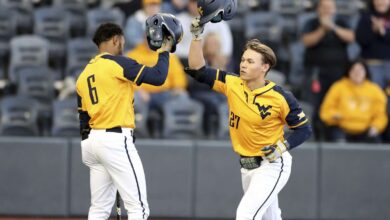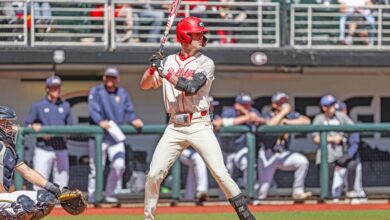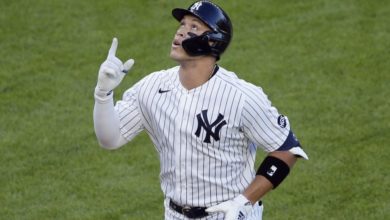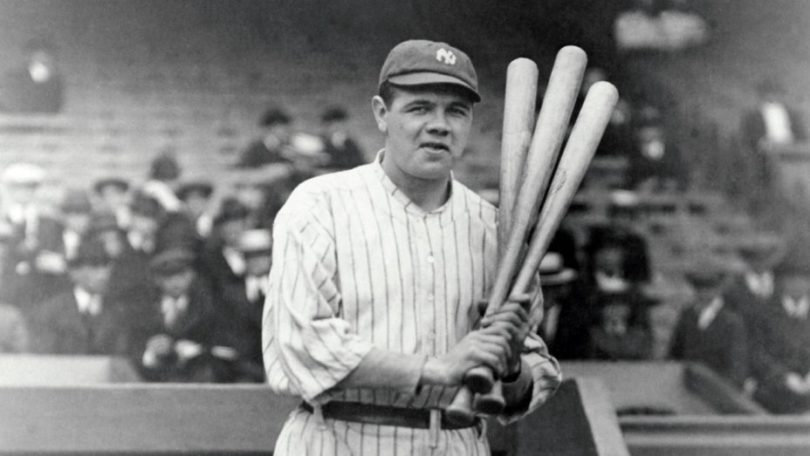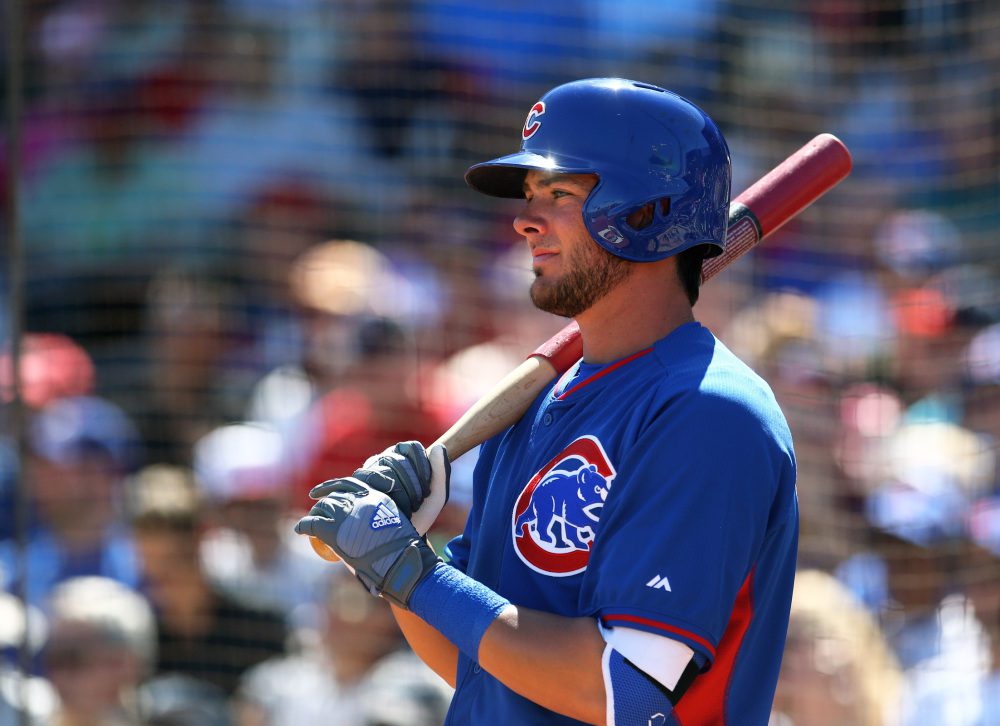
While a late flurry of trades was being announced Friday afternoon, multiple baseball pundits, their Twitter timelines busting with news, proclaimed the 2021 MLB trade deadline to be the best ever.
The final-hour moves, which saw Kris Bryant, Javier Baez, Jose Berrios, Kyle Gibson, Andy Heaney and Craig Kimbrel found new homes in the final two hours. Most of those came in the final hour.
Those deals came on top of the Nationals-Dodgers blockbuster that included Max Scherzer Trea Turner going from Washington to Los Angeles, and the Yankees landing Joey Gallo and Anthony Rizzo to bolster their lineup.
In all, 10 All-Stars this season were moved, and all 30 teams made a deal.
Each team that made a trade said it was better off for doing so — the buyers and the sellers. There were obvious winners and clear losers, teams that went crazy and teams that didn’t do nearly enough.
Some teams, somehow, fell in between.
All general managers, though, will be proven right or wrong in a few months or a few seasons.
Here are the winners, losers and to be determined of the trade deadline.
Winners
Los Angeles Dodgers: There are two currencies in baseball, money and prospects, and the Dodgers have plenty of both. They added Scherzer, a three-time Cy Young winner, and Turner, a toolsy shortstop who can play three positions up the middle and has another year of control. LA also added left-hander Danny Duffy, who jumps into a rotation that temporarily is without Clayton Kershaw and might be permanently without Trevor Bauer.
New York Yankees: Gallo and Rizzo give the Yankees the kind of left-handed power they have lacked all season. Heaney provides rotation depth in case Corey Kluber and Luis Severino are slowed in their comebacks for injury or aren’t any good once they are back. Left-handed reliever Joely Rodriguez, part of the Gallo trade, has been excellent against lefty hitters. Right-hander Clay Holmes also joined the bullpen. New York even managed to trade two relievers to Cincinnati to free up roster spots and acquire a prospect to help add some depth before the flurry of deals.
Toronto Blue Jays: There is no shortage of offense from the Blue Jays’ lineup with Vladimir Guerrero Jr., Bo Bichette and, well, just about everyone. But teams always need pitching. Toronto added one of the best starters in Berrios, a right-hander who came with an extra year of control. The Blue Jays also fortified their bullpen with veteran setup man Joakim Soria, who is a frequent target at trade deadlines, and closer Brad Hand, who Toronto flirted with signing in the offseason.
Atlanta Braves: Their offense will be without their best player, Ronald Acuna Jr., so the Braves added proven hitters who might have flown under the radar. They added outfielders Joc Pederson, Jorge Soler, Eddie Rosario and Adam Duvall, and catcher Stephen Vogt. Atlanta then added closer Richard Rodriguez to shore up an area that seems to be in constant need of shoring up.
Chicago White Sox: The South Siders didn’t need to do much as they are well on their way to the American League Central title, but they upgraded two positions by acquiring closer Craig Kimbrel and second baseman Cesar Hernandez. Kimbrel will share closer duties with Liam Hendriks, who has thrown a ton of innings the past few seasons and was being burned on both ends by manager Tony LaRussa. Hernandez came at a price, young second baseman Nick Madrigal, but upgrades that position and is affordable ($6 million option) for 2022.
San Francisco Giants: In acquiring Bryant, the Giants addressed two positions with one player as Bryant can play third base and left field. If Evan Longoria (shoulder) can return, Bryant would become the everyday left fielder. The Giants have a great deal of familiarity with lefty reliever Tony Watson, who returns to the Bay Area in a deal with the Los Angeles Angels. The Giants didn’t improve as much as the Dodgers did, but they did enough to give themselves a chance in the NL West.
Milwaukee Brewers: The Brewers are in first place for a reason: They can pitch, and they improved the staff at the deadline with the acquisitions of relievers John Curtiss and Daniel Norris to the bullpen. They needed more offense, and got that by adding veteran utility man Eduardo Escobar from Arizona. He was batting only .246 the time of the trade, but the switch hitter had clubbed 22 home runs. The Brewers have a cozy lead atop the NL Central, and these additions should help them stay on top.
Washington Nationals: Yes, sellers can win at the trade deadline, too, and the Nationals sold like mad. GM Mike Rizzo traded eight players, all of them you’ve heard of, in exchange for 12 young players or prospects. Two of them were the highest-ranked and third-ranked prospects who traded places at the deadline, according to Baseball America. They both came from the Dodgers — catcher Kelbert Ruiz and right-hander Josiah Gray. The Nationals did two things all sellers must do: They overhauled their farm system and shaved payroll.
Chicago Cubs: Another winning seller, pulling the same numbers as the Nationals — eight traded, 12 acquired. Madrigal stands as the best of the group. Gone, as is the case in Washington, are franchise cornerstones from the team’s recent World Series wins. Bryant, Rizzo and Baez are gone, but the Cubs needed to get something for them before seeing them leave via free agency.
Minnesota Twins: Few predicted before the season that the Twins would be deadline sellers, yet they were in a big way. They landed three of Baseball America’s top-five prospects dealt at the deadline (Austin Martin, Joe Ryan, Simeon Woods Richardson) in trades for Nelson Cruz (Rays) and Berrios. Minnesota traded reliever Hansel Robles and starter JA Happ for three other players. The thing is, the Twins probably could have and should have done more, but the work they did do made them better.
Losers
Colorado Rockies: Trevor Story is headed to free agency and is not going to re-sign with the Rockies. They were in the same boat as the Cubs and Nationals, who had expiring contracts for superstars. They were all traded. The Rockies, meanwhile, still have Story. And Jon Gray, for that matter. The best the Rockies can do now on Story is make him a qualifying offer and receive draft-pick compensation when he declines. They will do the same with Gray, who they hope to keep. They could have done better and needed to do better.
Seattle Mariners: In their defense, the Mariners acquired four players ahead of the deadline. In the process, though, GM Jerry Dipoto ticked off the entire team and fan base with one trade. He sent closer Kendall Graveman to Houston, one of the teams the Mariners are trying to catch, for aging reliever Joe Smith and infielder Abraham Toro. Seattle players were shocked, and reduced to tears and busting up the clubhouse. The Mariners added middle-of-the-road starter Tyler Anderson and closer Diego Castillo, but it wasn’t nearly enough.
San Diego Padres: In the race to win the NL West, the Padres clearly didn’t do as much as the Dodgers and the Giants. While San Diego is in good position for a wild-card spot, presumably against whoever doesn’t win the West, they aren’t in a good position to advance. Their rotation needed more help. Adam Frazier can help offset the semi-frequent Fernando Tatis Jr. injuries, and Daniel Hudson helps the bullpen. But the rotation, filled with injuries, needed another arm.
New York Mets: How is it that a team that added Baez could fall into the loser category? Well … The deal included starter Trevor Williams, who was immediately optioned to Triple A, and came at the expense of young prospect Pete Crow-Armstrong. Baez can help offset the Francisco Lindor injury and then pair with him up the middle, but he’s not having a banner year and is a free agent after the season. The Mets added left-hander Rich Hill, which seems important with Jacob de Grom’s shoulder woes, but it seems like the Mets needed more.
Boston Red Sox: The AL East, like the NL Central, is a battle, and the Red Sox are on the right side of it right now. But the two trying to catch them, the Yankees and Blue Jays, were far more active and are better now than they were before the deadline. The Red Sox might not be. They added Kyle Schwarber, who was on a record home-run tear in June, but he’s injured and might end up at a new position, first base. The two relievers added, Robles and Austin Davis, have ERAs near 5.00.
TBD …
Tampa Bay Rays: This team is always tough to figure out. They acquired Nelson Cruz, which is an obvious upgrade to the lineup, but traded away a key member of their rotation in Hill. They also traded Castillo, but added reliever JT Chargois and prospect Austin Shenton. Money dictates everything in Tampa Bay, and that was definitely in play in their moves. They also know how to win, and that’s big this time of year.
Houston Astros: In addition to Graveman, the Astros brought in three other relievers — Rafael Montero (in the Graveman trade), Yimi Garcia and Phil Maton. The Astros have played the new postseason game, where starters are only expected to go twice through the batting order and then the relievers are expected to save the day. The Astros have offense and are going to get even better when Alex Bregman returns, but they have some obvious holes that could have been upgraded.
Texas Rangers: Seven young players, including former Phillies top prospect Spencer Howard, were added to the roster in trades for Gallo and Kyle Gibson (along with Ian Kennedy and prospect Hans Crouse). Gallo had another year of control and was the Rangers’ best player. He was wildly popular with the fans. The Rangers attempted to negotiate a contract extension with Gallo, but it seems like they could have tried harder for a player who didn’t want to be traded. Time will tell on Howard, whose stock fell quickly, and the six others prospects.
Pittsburgh Pirates: They were definitely active, shipping away whatever they could, but the return wasn’t particularly eye-opening. What they did do was add depth to the minor leagues, which coupled with their draft (including the top overall pick, catcher Henry Davis) should boost the farm system. But it will take years to see if this deadline proves fruitful at the big-league level.
St. Louis Cardinals: The third-place team in the NL Central fortified its rotation with lefty starters Jon Lester and JA Happ, and the Cardinals definitely need help for their injury-depleted rotation. They didn’t sacrifice much in adding the veterans, and maybe a little boost is all the Cardinals needed. However, they are 9 ½ games out of first place and 6 ½ out in the wild card. They have a lot of work to do.
Philadelphia Phillies: In a definite going-for-it move, the Phillies added Gibson and Kennedy for immediate help. Gibson won his debut, and Kennedy is now the closer. Crouse is a nice prospect, though he comes with plenty of risk. The Phillies pulled the plug on Howard, their top prospect at the start of the season. While his velocity has dipped and his stock has fallen, it sure seems like the Phillies might have given up on Howard a little too soon.
Cincinnati Reds: The second-place team in the NL Central and the first team out of the second wild card stood largely pat. They did acquire reliever Mychal Givens from the Rockies and two relievers from the Yankees, Luis Cessa and Justin Wilson, to address their biggest issue but not their only issue. The Reds are in a tough spot. Though they are in good position in the wild-card standing, they have their work cut out for them.
Miami Marlins: GM Kim Ng navigated her first trade deadline deftly, especially when the Marlins traded outfielder Starling Marte for Oakland left-hander Jesus Luzardo. Marte is headed for free agency and was unlikely to re-sign. Luzardo was one of baseball’s top pitching prospects entering 2020. If Luzardo turns into a quality starter, the Marlins move into the win category. At the very least, the Marlins didn’t hurt themselves.
Oakland A’s: Andrew Chafin, Yan Gomes and Josh Harrison the kind of additions the A’s typically make at a deadline. They upgraded need areas without breaking the bank or hurting the farm system. The Marte-Luzardo deal, though, felt uncharacteristic for an A’s team that relies on affordable players, as Luzardo figured to be more multiple seasons under club control. Maybe they know something the rest of us don’t, but that one has a chance to bite them with the Yankees and Blue Jays nipping at their heels in the wild-card race.

About the Author: Jeff Wilson has covered the Rangers and MLB for the past 14 seasons and is the owner of Jeff Wilson’s Texas Rangers Newsletter (jeffwilson.substack.com). He has covered four World Series, is a voter for the National Baseball Hall of Fame, and is the author of Purple Passion: TCU Football Legends.


